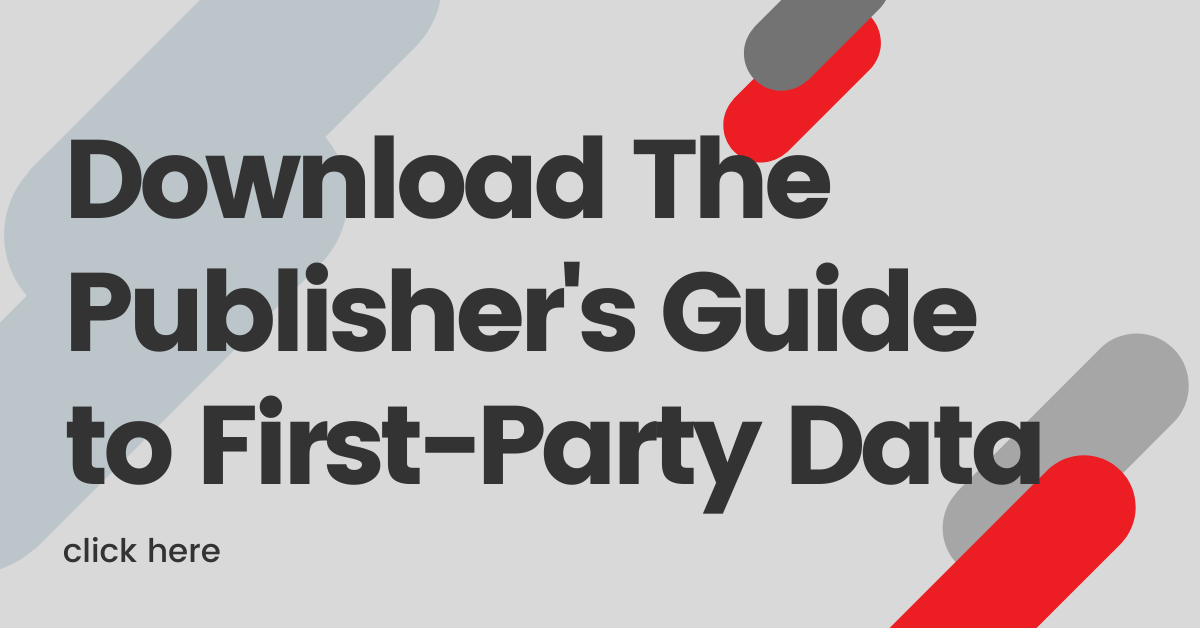How To Leverage First-Party Data To Activate Your Audience

The days of social media companies profiting from publishers’ communities are over — and that’s a beautiful thing. Leaving behind the necessity to chase volume for ad impressions is pushing the publishing industry in a positive direction and presenting media companies with the chance to reclaim their positions of power for the first time in 20 years. Publishers now have the freedom to focus on producing great content and engaging audiences without being at the mercy of an algorithm or cookie.

The move towards a first-party data and revenue model relies on highly valuable content and incredible user experiences. Building a proprietary and high-resolution first-party audience that will attract advertisers and marketers, based on contextual and behavioural signals, is how publishers will reclaim their audience and generate new revenue opportunities in a post-cookie world. One of the best things that publishers can do today in preparation is to focus on increasing the volume, accuracy and recency of their first-party data gathering activities. Let’s break down the values of data volume, accuracy and recency: The value and volume of first-party data is clear; the more data that a publisher has to make available to buyers, the better. The value of data accuracy is also immense; it’s collected when users declare their interests, either directly or by their actions, and stored on the server-side regardless of how browsers or regulators evolve their privacy restrictions in the future. Finally, user data has a very short half-life, so media companies with audiences that return frequently will have an advantage with data recency — bringing users back to your website frequently will help to ensure that your audience data is fresh. Now, let’s review some of the ways that publishers are collecting first-party data today:
Newsletters
Newsletters have emerged as one of the most popular tactics for collecting first-party data. It’s a great strategy because newsletters capture registrations in a user-friendly way and provide a clear value exchange for readers. They also cement a direct relationship between the publisher and the user.
Registration Walls
Registration walls are becoming increasingly popular both as standalone tools and as a step along the paywall meter. Registration walls can be very effective in collecting first-party data but they can also undercut the relationship-building process with your audience and put a damper on data collection so they should be implemented carefully. As the value of first-party data increases, publishers may want to consider rebalancing their registration walls to ensure they’re maximizing the perceived value exchange for users.
Community Engagement and User-Generated Content
Community engagement and user-generated content (UGC) represent the most comprehensive and sustainable ways for publishers to build their first-party data stores. While some publishers previously shied away from community engagement and UGC in fear of the costs traditionally associated with managing online communities, modern automated moderation technology is making this process highly cost-effective — creating new and scalable opportunities for publishers to promote community engagement and generate valuable first-party data. We mentioned earlier that authenticated users allow publishers to store and track their activity on the server-side regardless of how browsers or regulators evolve their privacy restrictions in the future. Viafoura data shows that even the simplest implementations of audience engagement tools drive between 30 to 50 percent of all user registrations on our customer sites. Here’s some compelling data from Viafoura on how user engagement tools drive user engagement and retention:
- Engaged users spend three times as much time onsite than non-engaged users.
- Engaged users have a fifty percent retention rate in month two, versus three percent for non-engaged users, and even after six months, engaged user retention rates only dip to forty percent.
- Registered users generate twenty times more page views and monthly time spent on site than non-registered users. User retention and frequency is crucial, and engaged and authenticated users are much more likely to return.
Here’s the clincher: To leverage first-party data to activate their audience, publishers must offer value in exchange for the effort it takes for a user to register, and for their consent to collect. At Viafoura, we call these “value exchange moments” and we design our products to easily integrate these moments into your site. The landscape has changed. Building a value-driven relationship with your audience by creating a series of engagement opportunities is how you will reclaim your audience and revenue opportunities in a post-cookies world. To learn more about how to build your first-party data strategy download The Publisher’s Guide to First-Party Data today.